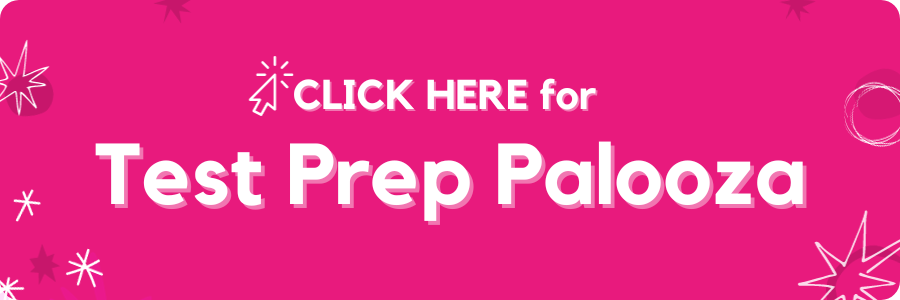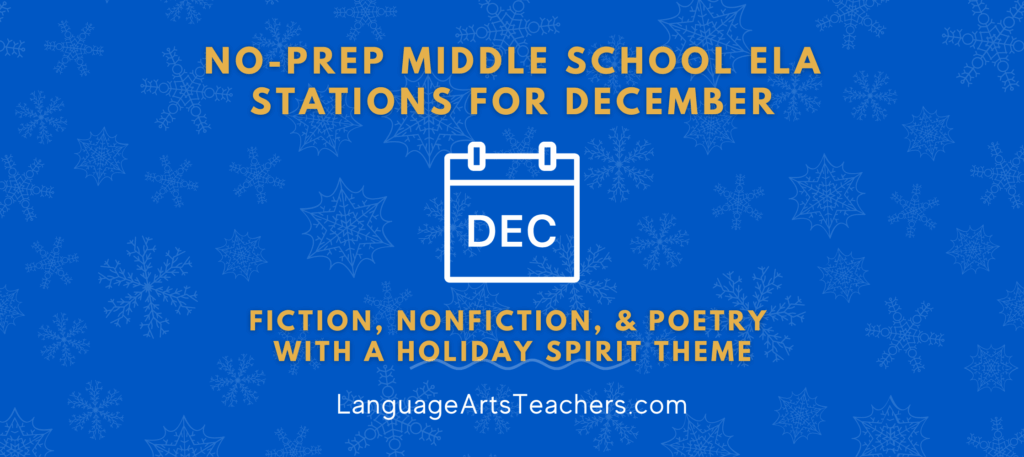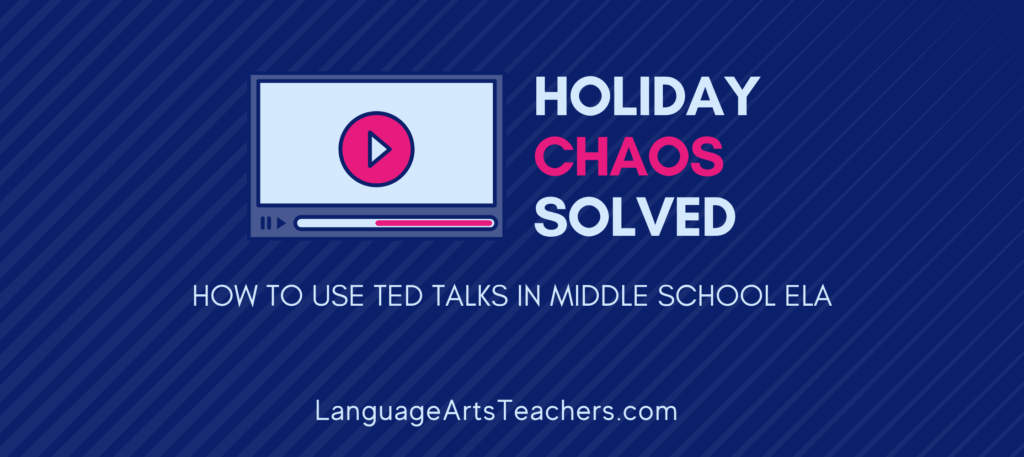As middle school reading teachers, we’re often told to “meet them where they are” and to “close the gaps” regarding students who read (sometimes far) below grade level.
When middle school students struggle with reading comprehension—which limits their ability to analyze, build connections, and develop their own thoughts about what they’re reading—teachers are often at a loss as to HOW to meet them where they are and what those next steps forward can look like.
During Test Prep Palooza, Ieva Grauslys of Simply Ieva and I tackled this challenge because while we face it all year long starting from Day 1 of the school year, we tend to panic as we approach test review time.
We’re human. We sometimes panic as a result of frustration and overwhelm. It happens.
The two reading strategies to best support struggling readers “test review style” that we recommend when you’re short on time and overwhelmed by all the skills you feel you need to review, are to narrow it all down to addressing vocabulary and sentence structure.
Here are a few key takeaways from our discussion (but get your ticket to Test Prep Palooza because Ieva shares images, resources, and lessons that I just can’t go into in a single blog post 🙂
- Vocabulary & Content → Targeted Pre-Teaching + Tier 2 Words (estimate, analyze, summarize, evidence, prove, etc.)
Those^ are the types of words that struggling students are going to face on reading or writing tests. They’re words that appear in questions and prompts, but more than that, they’re words that appear in all kinds of other content area tests, too!
Consider students who are in the beginning stages of learning English, or maybe they’re several grade levels below where they should be in reading. Terms like the Tier 2 words above are tricky when they have multiple meanings depending on the academic content area.
In math, seeing the word “prove” refers to working through a math problem and showing your work. In reading, “prove” refers to the text evidence used to make logical inferences. In writing, “prove” means to present your claim and write convincingly using embedded quotes and specific examples. >> I go into a lot of detail and actionable vocabulary “how-to’s” in this article on all that.
For struggling students, simply understanding the way a particular word is used in a test question or prompt can throw them off. Therefore, make time within your test review window to have students talk to you and talk to each other about what questions are asking of them. Can they rephrase the question in a way that makes sense to them so they know what to do next, but without changing the meaning?
Pre-teaching those types of terms plus allowing specific time to do nothing but read through test-style questions and prompts that use those words in context will go a long way to boost your students’ confidence and knowledge of what they’re asked to do.
On that^ note, you don’t have to do this teaching thing alone. Join us for the one & only virtual test prep event to help Middle School Reading + Writing Teachers review for “The Test” without feeling like you’re actually reviewing.
(2) Sentence Structure → Content-Area Specific → Assessment-Specific
Sentence structure—simple sentences, compound sentences, complex sentences, compound-complex sentences—are what we’re referring to here.
Struggling students tend to comprehend the simple and compound sentence structures, but get lost in the pathways of more complicated sentence structures they encounter regularly in grade-level texts.
All the commas, semi-colons, hyphens, parentheses, and meandering thoughts of a writer are complex and deep, even for us as adult teachers sometimes! I know when I’m tired or distracted, I often have to re-read something and really pay attention to the use of punctuation to figure out where I got lost in the writer’s thoughts.
Now add all that^ into a multi-passage, multi-hour long testing scenario and it’s super stressful for a student who is already struggling with reading comprehension on a daily basis across the content areas.
The longer the sentence, and the more punctuation that’s used, the more understanding and time that students will require to grasp the meaning. The trick is to teach students to break such a sentence into manageable chunks based on the punctuation.
For the sake of comprehension:
- Treat a semicolon as if it’s a period since what comes before and after are actually sentences in their own right
- If the long sentence is a question in a prompt, break that question into several smaller questions so students know what is asked of them
- For a sentence with several commas, hyphens, etc., it’s ok to end up with a few fragments, too, if that results in comprehension.
- Use a highlighter or pencil to underline or circle or place brackets around certain parts of longer sentences so you know which parts go together for comprehension.
Those are just a few to get started with, but be sure to model and talk through you doing this with a longer, more complex sentence or question so struggling students can see and hear what you do to understand what you’re reading.
The purpose here is to fill students’ toolboxes with hands-on comprehension strategies they can employ when they encounter long, intimidating sentences or question prompts.
In fact, make this a totally no-prep practice session by marking or circling such sentences in real time as you’re reading with your students. I don’t sit at home on Friday nights planning and looking for “the perfect complicated sentence” to use in class on Monday, for instance. Instead, I plan for 5 or 10 extra minutes of time on Monday knowing that as we do our read-aloud, I’ll for sure encounter a few sentences that I can go back to for the purpose of chunking for comprehension.
See? No prep.
And from there, if I feel the need to model my break-down chunking of a complicated sentence structure, then I’ll do that whole-class style after we finish the passage.
If I feel like I don’t need to model it (like if we’ve been doing this consistently for a while already), then I’ll turn it over to my students to work on independently first… Then we can discuss it in small groups or whole-class.
Looking for more no-prep or very low-prep test review strategies designed to engage your students? Join us for the one & only virtual test prep event to help Middle School Reading + Writing Teachers review for “The Test” without feeling like you’re actually reviewing.






